From basic question-answer bots to AI-powered healthcare chatbots like Baidu’s Melody, chatbots can create tremendous value.
There’s a reason that the U.S. chatbot market for healthcare alone is expected to at least triple by 2025. According to estimates published by IBM, up to 80% of routine questions could be answered by a chatbot. And guess which population asks a lot of routine questions? Patients.
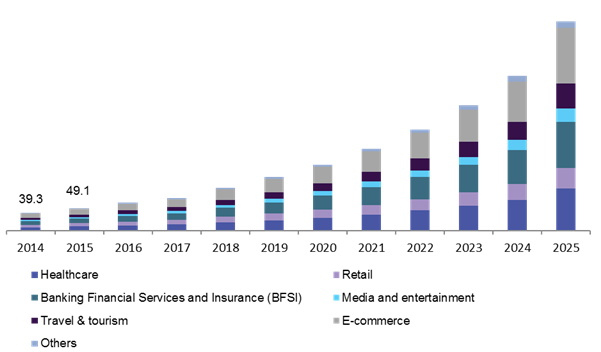
In healthcare, giving patients, prospective patients, and other site visitors a way to answer questions, find information, and even book appointments—without calling in—is a win-win. It’s easier for patients. It’s more efficient for providers. And it can save a tremendous amount of money and time. What follows is a closer look at how healthcare chatbots actually work, their benefits, and potential use cases. We’ll also cover some common obstacles to deployment, as well as the pitfalls that cause so many chatbots to fall short.
An Intro to Healthcare Chatbots (for the Layperson)
At their most fundamental level, chatbots are designed to mimic human conversation. Hence the name “conversational AI.” You type in a query of some sort—a keyword phrase or a question—and the chatbot uses that information to provide an accurate response.
Chatbots typically fall into three categories:
- Rules-based: On the lower end of complexity, rules-based chatbots are usually more transactional. They follow pre-defined, if-this-then-that “playbooks” that automatically respond to a list of pre-populated queries and questions. These chatbots might answer common questions with simple, canned responses, or retrieve corresponding support documentation that’s likely to answer a given question. They might also lead people to dead-ends (“I can’t help you with that,” or, “I’m having trouble understanding”) due to their limited technical capacity.
- Adaptive (or “intelligent”): Using machine learning (ML), adaptive chatbots can learn patterns the more requests they receive. A chatbot powered by ML will learn over time and improve understanding, response, and accuracy.
- AI-powered: Take your rules-based bot, layer in ML, natural language processing (NLP), and artificial intelligence (AI), and you have what many people refer to as an AI-powered chatbot. An AI chatbot can quickly determine intent and context, move through more complex and nuanced conversations, and deliver the look and feel of chatting with an actual human being.
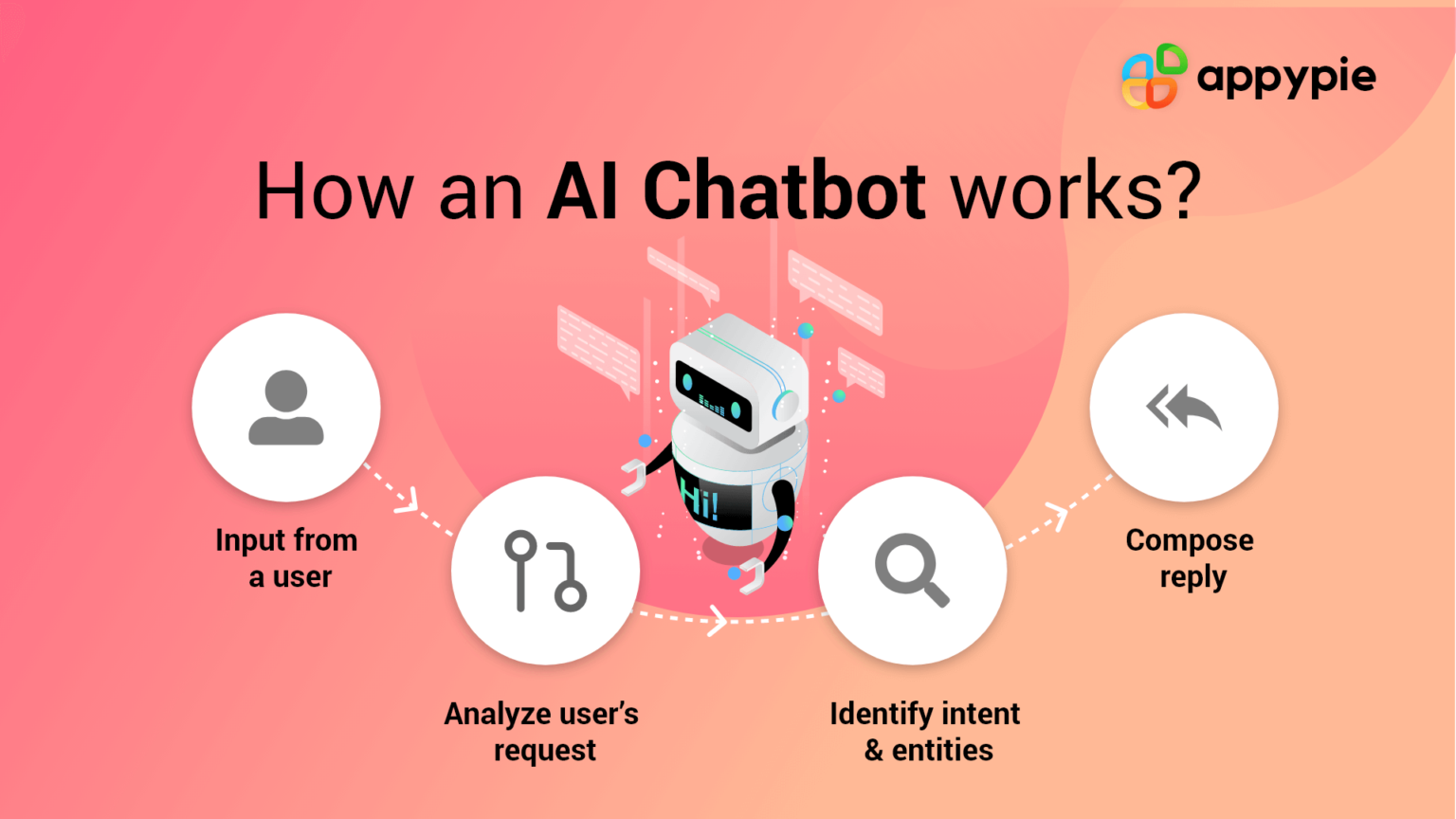
As impressive as chatbot technology might be, its real-world applications are even more so. Imagine a chatbot capable of responding to a patient query with follow-up questions, then recording those symptoms or details and handing them—and that conversation—off to the right department or doctor. Chatbots can serve as a one-stop-shop across your web entities, where patients can ask health-related questions, check on their appointments, or explore treatment options.
The potential use cases are many, the benefits considerable. This might explain why ABI Research projects a $1.5 billion increase in AI spending in healthcare and pharmaceuticals over the next five years.
How Healthcare Benefits from Chatbots
Deployed correctly, chatbots can be mutually beneficial for healthcare organizations and the patients they serve. Today, nearly all patients have two fundamental things in common: they’re carrying supercomputers (smartphones) in their pockets; and they expect fast accurate service 24/7. And as everybody knows, medical questions and concerns come up at all hours of day or night.
The most common example is the onset of symptoms. When a person wakes up in a cold sweat or wonders when their lingering cough is going to abate, they turn to their medical providers for answers. Chatbots can meet this demand in very interesting ways.
24/7 Service and Support
First of all, chatbots don’t sleep. They can provide patients with 24/7 service at a relatively low cost. Even if the chatbot is expensive to deploy, the gains in efficiency and workload often more than offset this upfront cost. And at times when inbound patient queries are spiking (global pandemic, anyone??), chatbots can help shoulder the load by automating many easy, repeat questions that don’t require human intervention.
Reduced No-shows, Enhanced Appointment Booking
Healthcare inefficiencies come in many forms. Appointment bookings, for one, and no-shows can gum up the works, leaking revenue and potentially creating negative health outcomes. By some estimates, 23-34% of patients don’t show up for their appointments. Think routine potentially life-saving screening, such as colonoscopies or mammograms. The consequences for health outcomes alone can be staggering. In terms of financial impact, one healthcare chatbot called LifeLink has the potential to save “medium to large emergency departments” between $2-5 million annually.
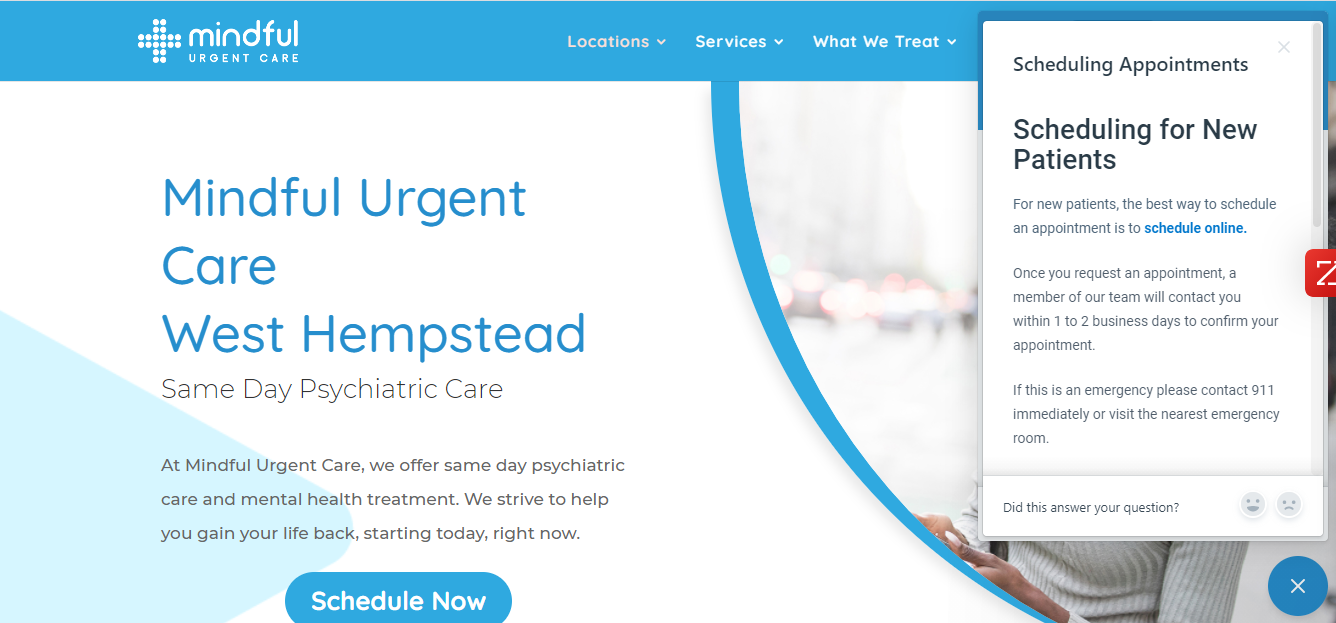
Getting appointment scheduling information is a top priority for patients. Here, Mindful Urgent Care uses a chatbot to quickly guide patients to schedule online.
Better Patient Experiences
Finally, chatbots can enhance patient satisfaction. We mentioned the ability to deliver timely, intelligent answers 24/7. Let’s not forget that healthcare can be sensitive, or even awkward for patients. Chatbots can provide a discreet, safe, and convenient environment to ask questions and get help without fear or judgment. Chatbots can also facilitate surveys and other patient feedback mechanisms to record and track sentiment.
How Healthcare Organizations Can Use Chatbots
Automated care comes in many forms. You can imagine that a chatbot deployment will look different for an urgent care provider versus a dental implant specialist. Still, here are some of the common use cases we’ve found for healthcare chatbots:
Screen, Assess, and Triage Symptoms
Forget WebMD; chatbots, especially those powered by AI, can assess symptoms and provide recommended next steps. COVID-19 screening comes to mind, of course. Chatbots can ease stress on the medical system by screening patients and limiting the volume of people going in for COVID-19 tests unnecessarily. Yet, chatbots can also make specialist recommendations, schedule appointments, or even recommend a nearby emergency room (ER) based on the symptoms input by the patient.
Scheduling and Appointments
For most healthcare providers, large and small, scheduling questions represent the lion’s share of inbound patient queries. The good news is that chatbots are more than capable of handling scheduling questions, looking up appointments, and facilitating new appointment bookings. They can also send appointment reminders, referral reminders, and the like (usually via text or SMS) to help curb no-shows.
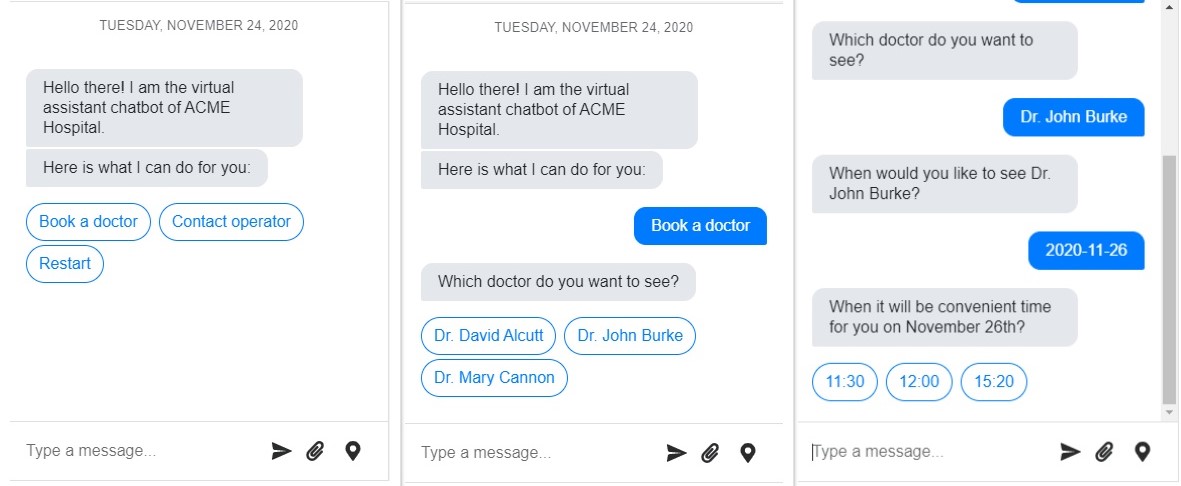
Here’s another example of how you can use chatbots to communicate scheduling information to patients using text messaging (SMS).
Questions About Treatment and Procedures
The answers to many questions about specific treatments, procedures, surgeries, or even medications can be built into organized chatbot playbooks. For more complex or personal questions, certain chatbots are capable of handing the interaction off to a live agent or medical professional.
Lead Generation
When people query chatbots, they share valuable information that can be used to create additional value. Let’s say a patient engages the chatbot on an eye surgeon’s website with questions about LASIK. Beyond providing answers to those questions, the chatbot might also facilitate a sign-up for a free consultation, thus creating a potential lead. We see this kind of lead-generation “flow” implemented often among healthcare chatbots, especially for elective surgeries.
How to Implement a Healthcare Chatbot
What does it cost and how long does it take? Well, the answer is: it depends.
You can pay $3,000 for a chatbot, or $3,000,000. You can roll out a simple question-answer bot on your website in a week or two, or spend months deploying an AI-powered solution that ties into your sales, marketing, support, and service infrastructure. Put differently, every chatbot deployment is a little bit different, depending on an organization’s size, existing IT infrastructure, budget, and specific organizational needs.
With that said, healthcare organizations need to do their due diligence in advance of sending requests for proposals (RFPs) and rolling out their chatbot solution. For this conversation, stakeholders from IT, support and service, sales, marketing, and operations ought to have a seat at the table. Will the chatbot be used primarily for patient support? Sales and marketing activities? Both? How will the chatbot be integrated into existing patient experiences and backend solutions (such as customer relationship management software, or electronic records management systems)?
Check Your Integrations
Integrations, in particular, are especially important to consider for chatbot deployments. Apart from connections with patient management systems, your chatbot needs access to a database of answers—information it can pull and serve up to patients right then and there. Chatbots Journal calls it “fuel” for chatbots.
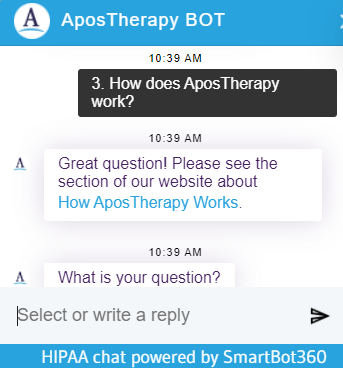
Without this so-called fuel, chatbots become glorified search engines, used mainly to retrieve links to relevant content in a knowledge base. Indeed, Gartner predicts that 99% of AI initiatives will fail due to poor knowledge management and information architecture.
Ensure HIPAA Compliance
Compliance is always a pressing need for healthcare organizations. In the world of chatbot deployments, HIPAA compliance can sometimes be a sticking point. Look for solutions that protect sensitive consumer data, encrypt communications, and safely pass identifiable patient information to other secure systems (such as electronic health records software).
Popular Chatbot Vendors in Healthcare
Early on, we mentioned Baidu’s Melody. It’s a very innovative implementation on the more complex and nuanced side of chatbot deployments, with the ability to deliver highly personalized responses tailored to each person’s specific needs (thank you, conversational AI). Here are three more interesting healthcare chatbots to give you an idea of what’s out there:
- Clevertar helped SA Health launch an AI-powered chat persona named “Zoe.” The purpose of this chatbot is to respond to questions about COVID-19, specifically. For more details, Clevertar published a detailed overview of this chatbot deployment.
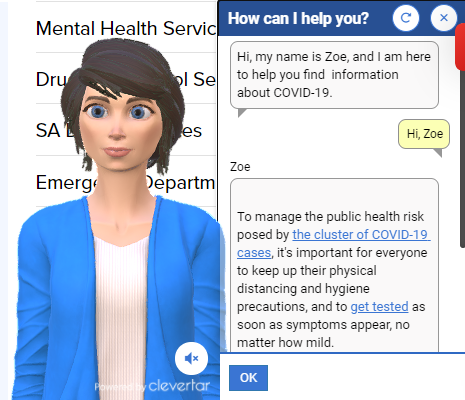
- QliqSOFT is a chatbot built specifically for the healthcare industry. Its use cases are many. Beyond facilitating communication between providers and patients, QliqSOFT also delivers virtual visits without the need for sign-in or app download.
- Digital Humans has created a platform centered around AI with a realistic human face and behavior. Their site touts how effective this approach can be in building trust, connecting with people, and delivering results. This includes a dedicated “Cardiac Coach” that provides support for people recovering from cardiac issues. Quite interesting! The video overview below gives you an idea of what the might look like:
It’s About People, Not Bots
The hype surrounding chatbots is often rooted in dollars and cents. When healthcare professionals, especially, see the tremendous potential for time, cost, and manpower gains, their eyes tend to light up. This has been especially true during the 2020 COVID-19 pandemic, where phone banks are completely jammed up, leaving many organizations scrambling to find a solution capable of shouldering the load.
As powerful as automation can be in these situations, the patient experience remains the top priority. At least it ought to! This is why we encourage the healthcare organizations we work with to proceed with a patient-first approach. Where and how can a chatbot add value to the patient journey? How can a chatbot be used to make life easier for a patient, or to support them during a trying time? What we find is that this kind of patient-first approach inevitably fosters the kind of business outcomes that organizations seek, without sacrificing one for the other.

